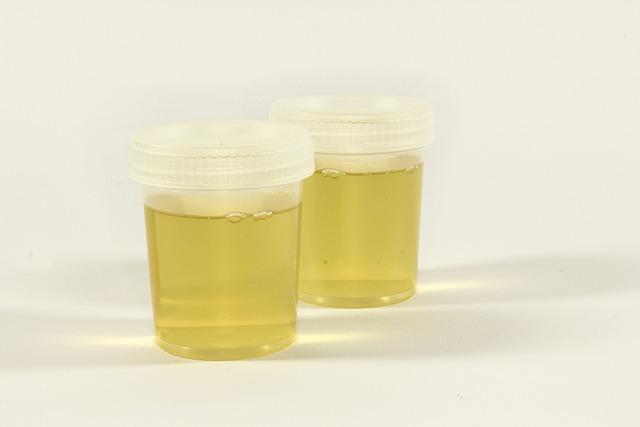Urine colour chart: what different colours can indicate
Urine can vary from pale straw to deep amber, and these differences are often a quick, visible clue about hydration, diet, medications, or underlying medical issues. A urine colour chart is a simple visual tool that translates hues and clarity into possible causes, helping people and clinicians decide when routine monitoring is enough and when medical evaluation may be warranted. While occasional shifts in colour are common and frequently harmless — for example, after eating beets or taking multivitamins — persistent or dramatic changes can signal metabolic, liver, or kidney problems, or the presence of blood or abnormal substances such as excess protein. Understanding the typical colour ranges and associated factors can help you interpret what you see while avoiding unnecessary alarm. This article explains common urine colours, what they may suggest about kidney and overall health, when a medical check is appropriate, and how protein in the urine fits into the picture.

This article is for informational purposes only and should not be considered medical advice. Please consult a qualified healthcare professional for personalized guidance and treatment.
urine: What do common colours indicate?
Pale yellow to straw-coloured urine usually indicates adequate hydration and normal concentration. Medium yellow to amber reflects more concentrated urine, often from mild dehydration. Dark amber or brown can indicate significant dehydration, concentrated pigments such as bilirubin (from liver issues), or metabolites from certain medications. Red or pink urine may come from blood (hematuria) but can also result from foods like beets or some dyes. Green or blue hues are uncommon and are most often caused by certain medications, dyes used in medical tests, or benign bacterial pigments. Cloudy urine may indicate infection, high mineral content, or other particulate matter.
kidney: How urine colour reflects kidney function
The kidneys regulate fluid balance, filter waste, and maintain electrolyte and acid–base homeostasis. Changes in urine colour can reflect how concentrated or diluted urine is, which is partly a kidney function indicator. Persistent very dark urine, foamy urine, or urine containing visible blood may suggest problems that involve the kidneys — for example, significant protein loss, glomerular bleeding, or impaired bilirubin processing when liver and kidney interactions are involved. However, colour alone is not diagnostic of kidney disease; it is one observation among symptoms, physical exam findings, and laboratory tests such as urinalysis and serum creatinine.
health: When colour signals a wider health issue
Beyond kidneys, urine colour can flag systemic health issues. Yellow and amber changes usually relate to hydration and vitamin supplements. Brown or tea-coloured urine can be a sign of liver dysfunction, severe dehydration, or certain inherited conditions. Red or pink urine warrants careful consideration because it could indicate urinary tract bleeding, which may come from infections, stones, tumors, or trauma. Cloudiness with odor, burning, or fever suggests infection. Notably, transient colour changes after foods or medicines are common; persistent or recurrent abnormalities, especially with other symptoms like swelling, fatigue, fever, or pain, are reasons to seek evaluation.
medical: What tests assess abnormal urine colours?
When urine colour is concerning or persistent, clinicians often start with simple, rapid tests. A dipstick urinalysis checks pH, specific gravity (concentration), blood, protein, glucose, bilirubin, and nitrites or leukocyte esterase (infection markers). Microscopic examination can reveal red or white blood cells, crystals, or organisms. If protein is detected or kidney disease is suspected, quantifying protein with a urine protein-to-creatinine ratio or 24-hour collection may be used. Urine culture helps identify bacterial infections. Additional blood tests (kidney function, liver enzymes) and imaging are ordered based on the clinical context. These medical tests help distinguish benign causes from conditions that require treatment.
protein: Why foamy or discolored urine can mean protein
Protein in the urine (proteinuria) often makes urine appear foamy or frothy, especially when it’s moderately to severely elevated. Small, transient amounts of protein can follow exercise, fever, or stress and often resolve. Persistent or increasing proteinuria can indicate glomerular damage from conditions such as diabetes, hypertension, or immune-mediated disease, and may be linked to kidney function decline. Protein itself does not usually change urine colour dramatically, but associated processes (inflammation, blood, or bile pigments) can alter hue. Detection and quantification of protein by dipstick and laboratory assays are important first steps if foamy urine persists.
Conclusion
A urine colour chart is a practical first step for noticing changes that may reflect hydration status, diet, medication effects, or potential medical concerns involving the kidneys, liver, or urinary tract. While many colour changes are benign and transient, persistent, recurrent, or symptomatic changes — such as blood, foamy urine, or dark brown shades — warrant medical assessment with urinalysis and follow-up testing. Observing patterns over time and sharing them with a healthcare professional provides the best path to accurate diagnosis and appropriate care.






